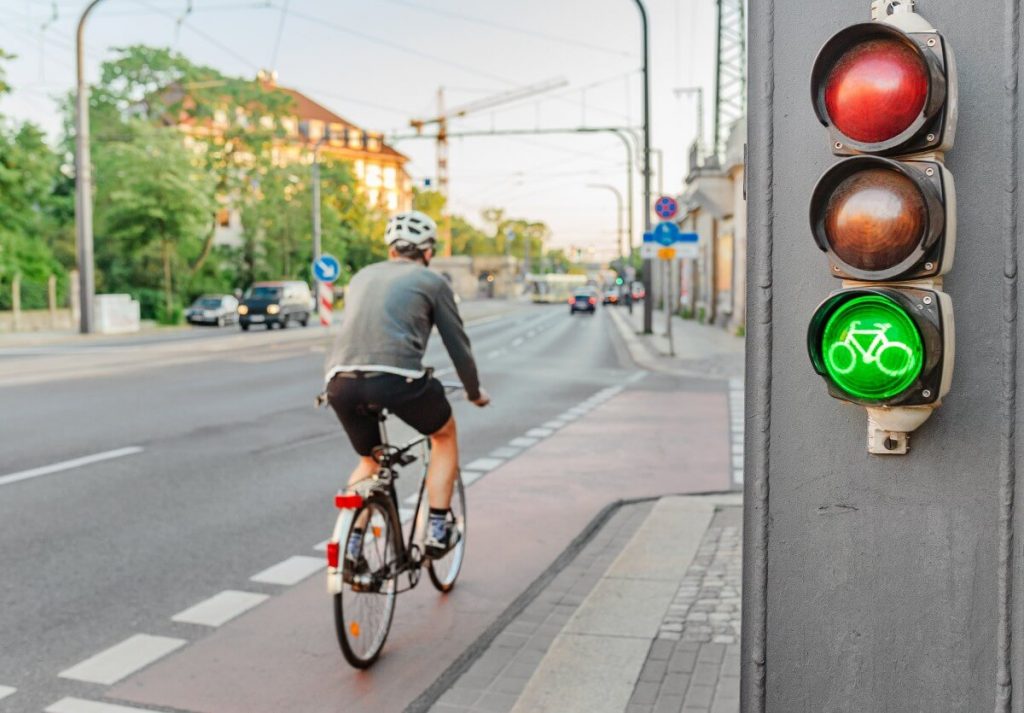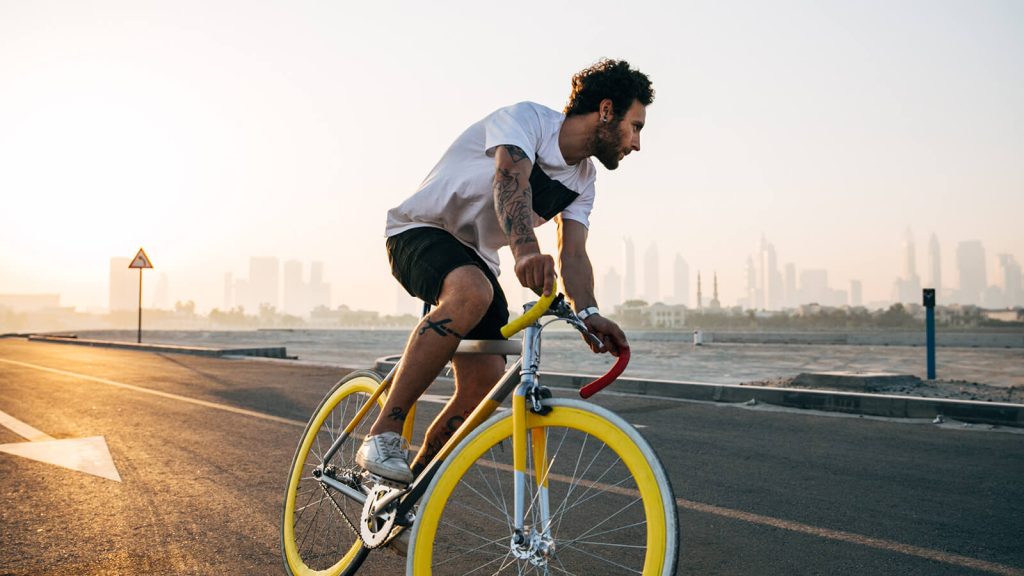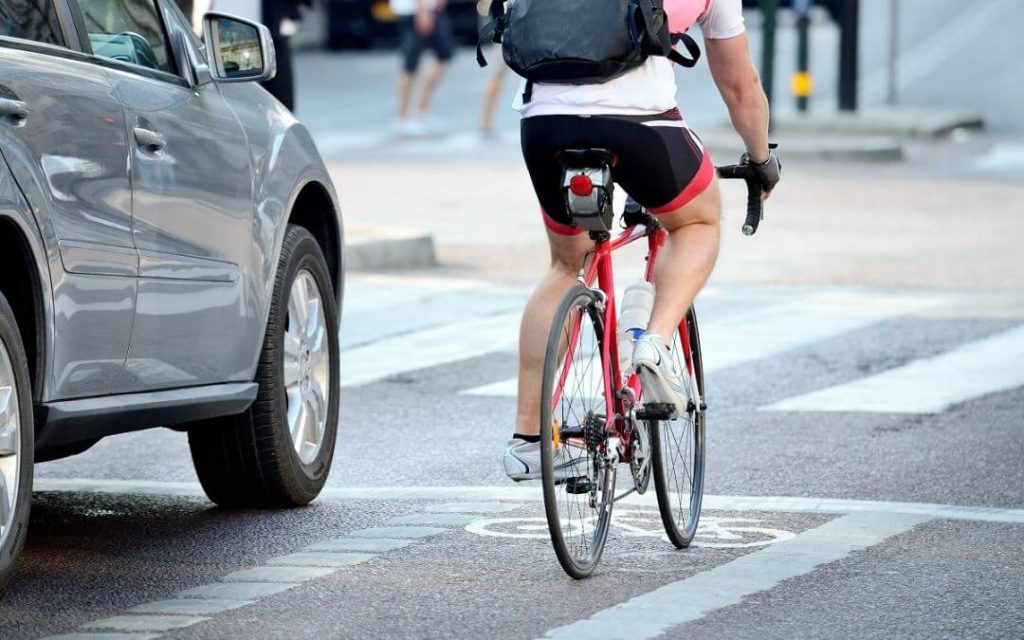Cycling isn’t only a cheaper vehicular option but a life-saver too. Over 12 percent of Americans cycle on a regular basis which is an astounding 45 million people. Although this number is 10 times lesser than of China where each household owns at least 1 bicycle, it’s still great news that many Americans have chosen the eco-friendly way to commute.
Regular cycling helps to reduce the risk of having heart disease or a stroke. It’s 20 times cheaper to maintain a bicycle than a car.
It is one thing to follow the traffic rules but it’s another to take your own measures of safety. As a responsible rider, you must put your common-sense before the traffic rules.
Using proper hand signals to direct other automobile drivers, wearing bright clothing, following the bike lane, and avoiding the blind spots are few essential safety tips that every cyclist must know like the back of their hand. One simple mistake could cost your life!
To assist every cyclist out there, we have compiled a list of the most essential safety tips meant for cyclists living in both cities and suburbs to minimize crashes and injuries. Next time you take out your bike, do remember and call these tips!
4 Types of Safety Tips For Cyclist
Basic Cycling Safety Tips

- Whenever you go out cycling, don’t forget to wear bright reflective clothing, even during the day. Wear proper clothing and safety equipment.
- Wear a blinky light or headlamp over your bike helmet.
- Avoid wearing headphones or earphones. Many cyclists lose track of their surroundings because of the music.
- Slow down at busy intersections and crossroads.
- Always be predictable and signal your turns with right hand-gesture
- Always look behind you or in a mirror (if your cycle has any) before veering/swerving left into the lane of traffic.
- Never ride on the sidewalk, it’s meant for pedestrians, not cyclists.
- Be wary of your visibility especially at intersections. Wave your arms to inform others of your presence.
- Do not cycle close to the curb too much. Leave yourself some space to veer into if necessary.
- Don’t forget to take your headlamp and check your rear light when riding at night. Install a bike bell if necessary.
- Follow the updated local laws and traffic rules of your city.
- Ride defensively. Think about the common mistakes other drivers could make such as using a cell phone, not paying attention, drinking or using drugs while driving, etc. This will help you prepare to ride safely.
Hazard Recognition

Unlike four-wheeler drivers, cyclists rely on their balance and presence of mind while riding on the hazardous road. Hazard recognition relies on assessing the condition of the road and the weather conditions. Identifying potential hazards and paying attention to your surroundings will keep you safer.
- Be wary of uneven and rough surfaces. If you’re new to the place, ask the bystander or any passerby about the condition of the road ahead.
- Any sharp object in the road can cause a flat tire, loss of balance, or unsafe maneuver.
- Slippery surfaces create a loss of traction. You’re likely to lose balance or slip-off in the slipper surface. Get off your bike and walk.
- If it’s raining, you should avoid taking the hilly or unpaved road altogether. The loose soil and mud can be a deadly combination for a likely accident.
Avoid Collisions

Here is how you can avoid some of the most common vehicular collisions.
- Never wear headphones while riding. The loud music often muffles car horns.
- Keep both hands on the handlebars, except when signaling.
- Ride with the flow of traffic. Avoid swerving to turn-back on a busy road.
- Wear a brightly colored bicycle helmet and clothing. Retro-reflective material really comes handy on the road. Follows the bike helmet laws
- Use the correct hand signals.
- Slow down or take time when crossing the intersection and crossroads.
Additional Bike Safety Tips

- Protect your skin from the direct sunlight by wearing reflective clothing, long sleeves, sunscreen, and sunglasses.
- Know the weather forecast before stepping out. If it’s going to rain, you would definitely need to carry a raincoat. If you’re carrying a backpack, ensure to buy a rain cover.
- Learn to look over your should before swerving. You can also install a rearview mirror and side mirror on your handlebars and helmet.
- If possible, ride with a buddy. Two cyclists are always more visible than one. And, in the case of accidents, the other rider can call for help.
- Get creative with your route. Choose roads that are extremely wide or have dedicated bike lanes. Avoid roads or shortcuts with busy traffic.
- Carry a tool-kit in your bag at all times. You can carry a patch tool to patch up the flat tire, first-aid kit, and mini spanner to undo/redo any bolts.
- Always carry a cell phone and ID. An ID and a cell phone help to quickly get emergency assistance.
- Always carry your own drinking water for both short and long rides. You don’t know how long you may have to sit in the traffic.
- Know the bike safety rules for your state. Check out this list compiled by the League of American Bicyclists.
- Always keep updated with the new hand signals for cyclists. Always use ones that drivers understand.
- Cyclists are 3.6 times as likely to get in an accident when riding on the left side of the road. Always ride with the flow of traffic.
- Most riders rely on eye contact to gauge whether an oncoming driver has seen them. Cars traveling at high speeds are less likely to keep track of your oncoming. Rely more on a driver’s overall behavior before deciding to do anything.
- Use body language and make noise when eye contact fails. Wave your arms and yell. Flicker the headlamp in case it’s dark.
- Always go slow on roads with busy traffic. Although drivers are wary of cyclists, they can often unsee you in busy traffics.
- Use front and rear lights. This goes back to staying visible. It’s also required by law in most cities.
- Know how to turn left or right (depending on which side of the road you ride)
- Option 1: Maneuver to turn lane just as a car would.
- Option 2: Go straight through the green light, stop at the far end of the intersection and dismount your bike, and then walk across with the other foot traffic once the light changes.
- Take the lane when necessary. If the road is too narrow or crowded, you can get off your bike and walk on the lane until you pass the crowd.
- Never pass a vehicle on the right if you are in a right-hand drive country and don’t pass a vehicle on the left if you are in the left-hand drive country. The driver may not see you.
- Switching back and forth between street and sidewalk is illegal for cyclists, unsafe for pedestrians, and confusing for drivers. If you need to use the sidewalk, dismount and walk your bike all the way.
